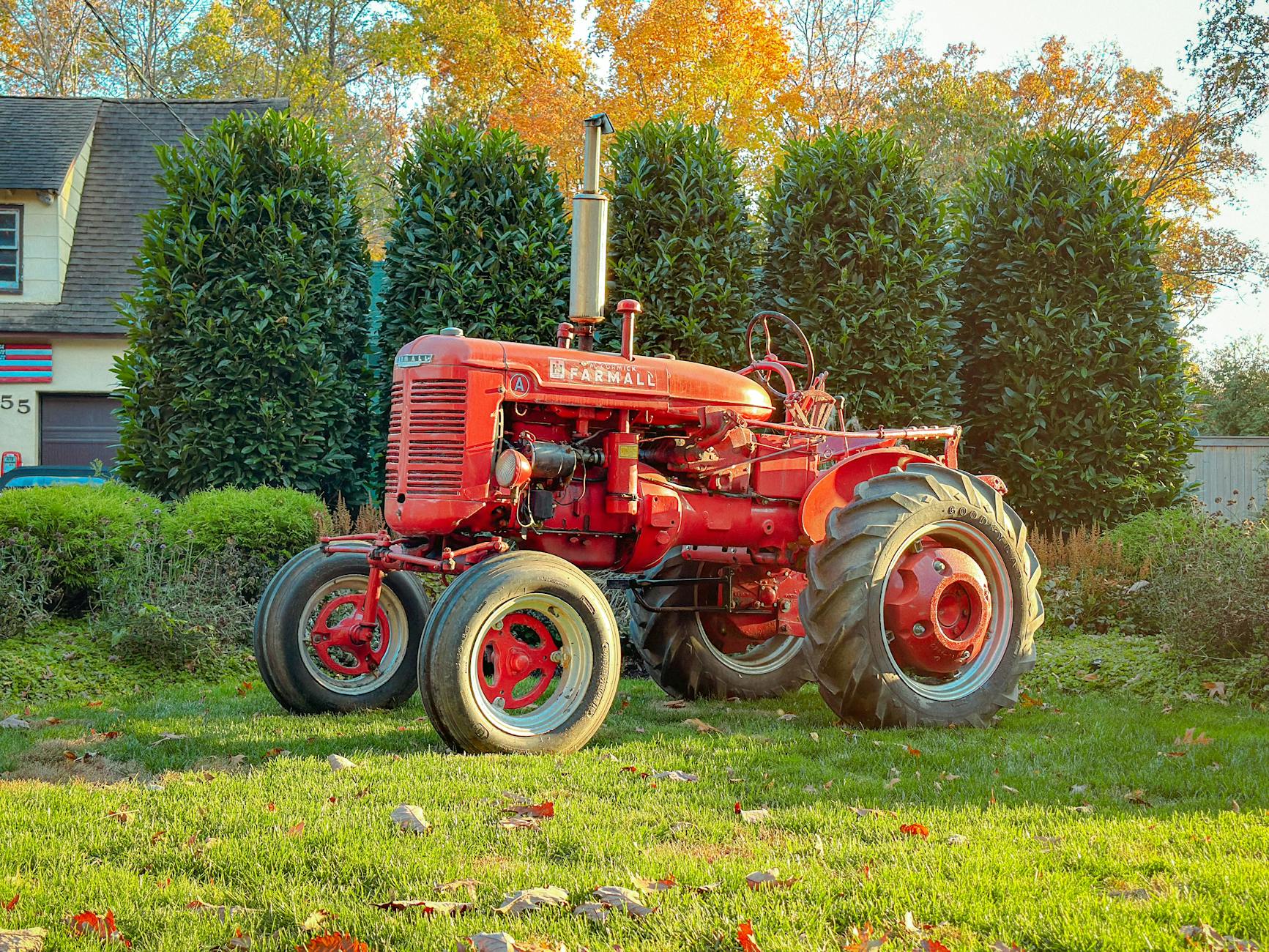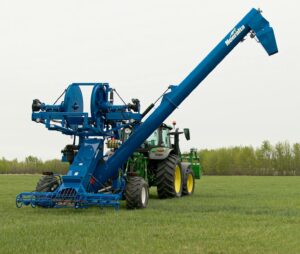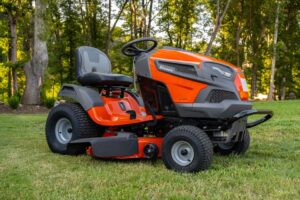Maintaining a lush, well-manicured lawn requires the right equipment, and for larger properties, a tractor can be a game-changer. Do you looking for right Tractor for lawn care? While a standard lawn mower may suffice for smaller areas, a tractor provides the power, versatility, and efficiency needed for extensive lawn care. With numerous models and features available, selecting the right tractor can be overwhelming. This guide explores everything you need to know about choosing the perfect tractor for your lawn care needs.
Why Use a Tractor for Lawn Care?
A tractor for lawn care offers several advantages over standard lawn mowers, including:
- Power: Tractors are equipped with robust engines, allowing them to handle larger areas and tough terrain.
- Versatility: Beyond mowing, tractors can accommodate a wide range of attachments for tasks like aerating, fertilizing, hauling, and snow removal.
- Efficiency: They reduce the time and effort required to maintain large lawns.
- Durability: Built to last, tractors provide reliable performance over many years.
Factors to Consider When Choosing a Lawn Care Tractor
1. Lawn Size and Terrain
The size and layout of your lawn significantly influence the type of tractor you need.
- Small Lawns (Less than 1 Acre): For small, flat lawns, a garden tractor or riding lawn mower with 15–25 horsepower (HP) should suffice.
- Medium Lawns (1–3 Acres): Look for a compact tractor with 25–50 HP and a larger cutting deck (42–54 inches) to cover more ground efficiently.
- Large Lawns (3+ Acres): A utility tractor with 50+ HP and advanced features like four-wheel drive (4WD) is ideal for handling expansive areas and uneven terrain.
2. Engine Power and Performance
The engine is the heart of any tractor, determining its ability to handle demanding tasks.
- Horsepower (HP): For lawn care, 15–50 HP is usually sufficient, depending on the lawn size and terrain.
- Torque: High torque ensures consistent performance, especially when using attachments like aerators or dethatchers.
3. Cutting Deck Size and Blade Configuration
The cutting deck size determines how much grass the tractor can mow in a single pass.
- Deck Size:
- 30–42 Inches: Ideal for small to medium lawns.
- 42–54 Inches: Suitable for medium to large lawns.
- 54+ Inches: Designed for large properties and commercial use.
- Blade Configuration: Look for tractors with multiple blades for a cleaner and more even cut.
4. Transmission Options
The type of transmission affects the tractor’s ease of operation and performance.
- Manual Transmission: Provides better control but may not be ideal for frequent speed changes.
- Hydrostatic Transmission: Offers smooth, automatic speed adjustments, making it beginner-friendly and perfect for lawn care.
- Automatic Transmission: Similar to hydrostatic but slightly less smooth; still a solid choice for most homeowners.
5. Attachments and Accessories
One of the biggest advantages of using a tractor for lawn care is its ability to accommodate various attachments, including:
- Mower Decks: Standard for grass cutting.
- Aerators: Improve soil health by allowing air and nutrients to penetrate.
- Spreaders: Evenly distribute seeds, fertilizer, or pesticides.
- Dethatchers: Remove built-up debris and dead grass for a healthier lawn.
- Snow Blowers or Blades: Convert your tractor into a snow-clearing machine during winter.
6. Maneuverability and Turning Radius
For lawns with obstacles like trees, flower beds, or pathways, a tractor with a tight turning radius is essential for maneuvering around them. Zero-turn tractors are particularly effective in such scenarios, offering exceptional control and agility.
7. Tire Type and Traction
Tires play a crucial role in ensuring the tractor performs well on different terrains.
- Turf Tires: Ideal for lawns as they minimize damage to grass while providing decent traction.
- All-Terrain Tires: Suitable for uneven or sloped lawns but may cause more wear on delicate grass.
- Four-Wheel Drive (4WD): Recommended for hilly or muddy areas to prevent slippage and maintain control.
8. Comfort and Ergonomics
Maintaining a lawn often requires hours of work, so comfort is an important factor.
- Seat Design: Look for tractors with adjustable, cushioned seats.
- Vibration Reduction: Reduces operator fatigue during extended use.
- Noise Levels: Quieter engines enhance the overall experience, especially in residential areas.
- User-Friendly Controls: Simplified controls make operation easier for beginners and seasoned users alike.

9. Durability and Maintenance
Investing in a durable tractor ensures long-term value. Consider the following:
- Build Quality: Tractors with sturdy frames and high-quality components last longer.
- Ease of Maintenance: Models with accessible engine compartments and tool-free filter replacement are easier to maintain.
- Warranty: A good warranty reflects the manufacturer’s confidence in their product.
Types of Tractors for Lawn Care
1. Riding Lawn Mowers
- Best For: Small to medium lawns with minimal slopes.
- Key Features:
- Affordable and easy to use.
- Cutting deck sizes typically range from 30–54 inches.
- Example Model: John Deere S100 Series.
2. Garden Tractors
- Best For: Medium-sized lawns and light landscaping.
- Key Features:
- More powerful than riding mowers.
- Compatible with a variety of attachments.
- Example Model: Husqvarna TS 354XD.
3. Compact Tractors
- Best For: Large lawns and properties with varied terrain.
- Key Features:
- High horsepower (25–50 HP).
- Supports heavy-duty attachments.
- Example Model: Kubota BX Series.
4. Zero-Turn Tractors
- Best For: Lawns with numerous obstacles.
- Key Features:
- Exceptional maneuverability with a zero-turn radius.
- Faster mowing speeds.
- Example Model: Toro TimeCutter Series.
Top Brands for Lawn Care Tractors
1. John Deere
- Known for reliability and innovative features.
- Extensive range of models for all property sizes.
2. Husqvarna
- Offers durable, high-performance tractors.
- Excellent for both residential and commercial use.
3. Kubota
- Renowned for compact and versatile tractors.
- Superior build quality and fuel efficiency.
4. Cub Cadet
- Specializes in user-friendly lawn tractors.
- Affordable options for homeowners.
5. Toro
- Leader in zero-turn mowers and tractors.
- Known for speed and precision.
Tips for Buying the Right Lawn Tractor
- Test Drive Models: Visit a dealer to experience the tractor’s handling, comfort, and ease of operation.
- Check Reviews: Read user reviews to understand real-world performance and reliability.
- Consider Long-Term Costs: Factor in maintenance, fuel, and replacement parts when setting your budget.
- Plan for Attachments: Ensure compatibility with the attachments you need now and in the future.
- Prioritize Safety Features: Look for models with features like roll-over protection and automatic shutoff systems.
Conclusion
Choosing the right tractor for lawn care can transform how you maintain your property. By considering factors like lawn size, terrain, engine power, and available attachments, you can find a model that fits your needs perfectly. From compact garden tractors to powerful zero-turn models, the options are vast, and the benefits are undeniable.
Take the time to research, test models, and consult experts to ensure you invest in a tractor that provides years of reliable service. With the right machine at your disposal, achieving a pristine, well-manicured lawn has never been easier.


